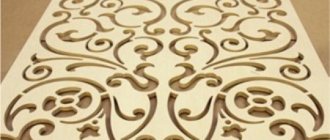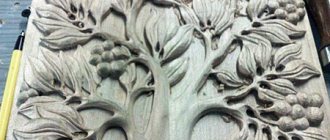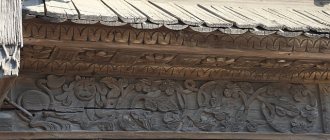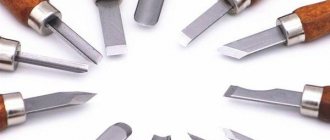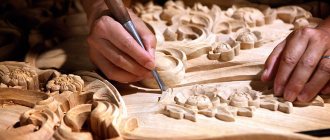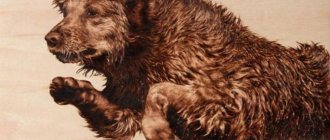Articles
All photos from the article
In the arsenal of any craftsman engaged in the manufacture of decorative objects, there will definitely be wood cutters for handmade work. These devices can be very different, and therefore it is advisable for beginners to become familiar with their main types, as well as study the features of choosing and caring for such an instrument.
A variety of knives and chisels are used for processing wood.
Tools for work
Truly high demands are placed on specialized carver tools. The skill of the performer plays an important role. But only with correctly selected and carefully sharpened tools will a master be able to demonstrate his skills in full force.
And if a professional easily and at first glance determines the quality of devices for work, then a beginner is invariably lost and can make a mistake.
First of all, you should purchase:
- quality knives;
- chisels (several pieces);
- needle files;
- hacksaws cutting metal;
- clamping device;
- sandpaper of different grain sizes;
- drill and several types of drills;
- wooden bars.
Knives
It is best to buy knives in a specialized store of goods for creativity and hand-made goods. They must be made from high quality steel. If funds are limited, you can temporarily buy simpler knives, but sharpen them well.
Experts speak positively about tools from the Tatyana, Narex and Kogatana brands.
Chisels
At first, instead of chisels, you can use a sharpened screwdriver and file.
When purchasing chisels, pay attention to the following types:
- Flat - a chisel in the shape of an elongated rod with a cutting edge at the end; it is needed during the initial processing of wood.
- Semicircular is one of the most popular types; it can be of varying degrees of roundness: medium, round or sloping.
- V-shaped - necessary when making geometric threads.
Machine
Carving on a machine has enormous potential, simplifying this work and turning it into pleasure. Modern models are not cheap at all, but professionals characterize them from the best side.
The machines can simplify many labor-intensive operations familiar to carvers:
- surface treatment at different angles;
- drilling recesses, grooves and grooves;
- milling;
- the actual carving.
There are huge differences in the sizes of machine models and in the technology of their operation:
- manual;
- milling and engraving;
- laser;
- CNC machines.
To simplify many operations of artistic carving, professionals advise purchasing a CNC machine. But if a novice craftsman just wants to try himself and see if this hobby is suitable for him, a manual machine is quite enough.
Manufacturing and service
Making the cutter yourself
Many craftsmen, either wanting to save money or not trusting third-party manufacturers, prefer to use homemade carving tools. In principle, making a knife or chisel is quite simple, the main thing is to choose the right material.
The photo shows a hacksaw blade and a simple jamb knife made from it
The raw materials for our design can be used:
- A saw blade for wood or metal is an almost ideal blank for a jamb knife. During the manufacturing process, we cut off a piece of blade on a machine or simply break it off at the angle we need, and then form a cutting edge.
- The wood saw blade also has acceptable characteristics. The carbon steel used to produce such saws holds an edge well, which means that the cutter will not become dull even when working with hard wood.
- Before making a semicircular chisel, you can look “in the bins” for an unnecessary punch. To make a tool, we will only need to cut off part of the wall diagonally - and we will get a very convenient device for sampling wood.
An important part of any cutter is the handle.
The instructions for its manufacture are also not complicated:
- We take a block of hardwood and cut a handle out of it.
- We make a hole at the end of the handle, the shape of which corresponds to the shape of the shank of the metal part.
Gluing the blade into the handle
- We glue the cutting part into the handle, and then clamp the structure with a metal ring.
Note! Sometimes the handle is made of two halves. In this case, the blade can be additionally secured with screws or rivets, and gluing should be done in a vice or clamps.
Sharpening cutters
You can only get a decent result if you work with a perfectly sharp tool. And since even the softest wood dulls the blade quite quickly, sharpening wood cutters is definitely included in the “minimum program” of training for a novice carver.
To perform this operation we will need:
- Bars of different grain sizes - from coarse to fine.
- Old leather belt for straightening.
- GOI paste (or similar composition).
Rough sharpening
We do the work like this:
- First, we moisten a coarse-grained block, place the cutter on it at the selected angle and sharpen it using pressure from ourselves.
- We switch to a block with medium abrasive grain and repeat the operations until a clearly defined sharpened edge appears.
- We carry out the finishing on a diamond stone, removing the metal chamfer that appears on the tip of the cutter.
- Then we apply a layer of GOI paste (a composition based on chromium oxide) to the belt and polish the working part to a mirror shine.
Editing on the belt
Advice! Finishing on the belt can be done more often than the main sharpening - this way we can correct a slightly dull blade.
It’s easy to check the quality of our work: if the cutter cuts the newspaper without effort, it means we’ve done everything correctly, and we can start working on the workpiece.
Wood carving for beginners
In order to master the skill of turning objects from ordinary wood into works of art over time, you need to gradually go through lessons, moving from simple to complex.
To learn how to create decorative wooden elements, you need to know the technology of work and possess the necessary tools, without neglecting safety precautions.
Masters advise beginners, especially children, to first master the basics of contour carving. For it you will need:
- wooden canvas or object for decoration;
- set of chisels;
- blunt knife;
- pencils;
- sketch (drawing);
- sandpaper.
First, using a sample, you need to check how to work with each of the chisels, see what it is needed for, and practice.
Then the sketch from the paper needs to be transferred to the workpiece.
Only after studying the basic principles of working with the tool can you proceed to testing the products.
The most common are sketches with images of flora and fauna, and landscape sketches.
After applying the pattern, the wood must be sanded and varnished.
Set of cutters Narex Profi 868700
Photo: https://pokupki.market.yandex.ru
The blade is made of chrome-silicon tool steel, hardened to a hardness of 57-59 HRC. Blade length: with a width from 4 to 20 mm - 100 mm, with a width from 30 to 70 mm - 125 mm. The handle is octagonal, barrel-shaped, made of stained beech.
Set of cutters Narex Profi 868700
Advantages:
- quality
- reliability
- convenience
- comfort
- safety
Mistakes and how to avoid them
It takes a lot of time to master carving. And it goes not only to learning how to work with a tool, but also to coping with the consequences of failures and mistakes that are made due to inexperience.
Professionals advise paying attention to these “little things” that can ruin the final result:
- Only well-dried wood should be used.
- You should not hastily delve into the surface of the workpiece; all movements should be made smoothly and with minimal pressure on the tool.
- It is necessary to take into account the specifics of different types of wood, having studied it additionally, with different types of wood and you need to work differently.
- You can’t start working without a sketch; a beginner should give up improvising.
- You can’t grab onto everything at once and try to complete complex tasks; you need to gradually move from the simplest tasks to more complex ones.
Set 23 pcs. BISON EXPERT 18377-H23
Photo: https://pokupki.market.yandex.ru
Professional cutters of various shapes and sizes meet the needs of any master. Convenient handles ensure comfortable work. They are used to perform precision and artistic design work on paper, cardboard, soft and hard wood, and plastics. The blades are made of improved tool steel. Three differently shaped handles provide a secure grip and comfortable operation. Convenient plastic box for storage and transportation.
Set 23 pcs. BISON EXPERT 18377-H23
Advantages:
- quality
- reliability
- convenience
- comfort
- safety
Types of thread
There are many techniques for processing wood, with the help of which craftsmen create real works of art from it.
As such, a strict classification has not yet been created, but conditionally all techniques can be divided into several types.
Flat socket carving: a flat wooden surface acts as a background. The pattern is formed using notches of various shapes.
Flat grooved threads are:
- Geometric has a pattern in the form of a bizarre combination of various geometric shapes.
- Contour forms a pattern in the form of a rigidly drawn outline, as if pressed into the surface.
Flat-relief carving highlights a convex pattern on a background deepened with the help of a tool.
Flat relief carving can be:
- Oval - the pattern on it is located in the shape of an oval, often filling the entire space of the canvas with small recesses.
- With a selected background, a large ornament appears against the background of the space scraped out by the tool.
Relief carving: three-dimensional paintings, practically devoid of a flat background.
Relief carving can be:
- The bas-relief has protruding figures of medium height (about half of their volume).
- High relief - the background is deeply recessed, the figures are very voluminous and protrude greatly.
- “Tatyanka” - a convex pattern fills the entire space of the product, the elements merge, turning into each other (usually the theme is botanical).
The slotted thread can have the appearance of flat-relief or relief. The pattern is made by completely removing wood fragments and leaving through voids between the elements of the pattern.
The slotted thread is:
- Openwork: has protruding parts combined with cut holes, widely used for decorating furniture sets in the Baroque and Rococo styles.
- Overlay: made up of figures cut through and with protruding elements, processed only on the front side.
Sculptural carving - the depicted objects are separated from the background and represent a full-fledged sculpture.
House carving is the creation of elements used to decorate wooden buildings.
Do-it-yourself sharpening of cutters
The quality of processing depends on how correctly the working tool is sharpened. To properly sharpen, you need to use an electric sharpening machine, which has a set of wheels of varying degrees of grain and a velvet bar necessary for straightening the blades.
Craftsmen choose sharpening angles personally based on their preferences, turning skills, wood hardness, quality of working tools and the final desired type of processed surfaces.
For beginner turners, the best option is sharpening angles for:
- meisel - the bevels should be 40° in relation to the axis of the working surfaces and 40° for the sides of the blade;
- Reyer - from 50° to 60°.
As you gain experience and improve your skill level, you can always reduce the sharpening angle to 20°-35°.
It is also recommended for craftsmen, in addition to different types of cutters, to have one type of cutters with the same size, but with different sharpening angles. This approach can significantly speed up and facilitate the work process, and will also increase the service life of the tools, since there will be no need to constantly resharpen the blades depending on the type of material being processed.
The obtuse type of angles is intended for sharpening hard wood or for initial (rough) processing.
The sharp type of corners of the cutters makes it possible to process surfaces better and speed up turning, but when using it you should be careful because there is a risk of chipping the workpiece and damaging the blade. This type of tool also needs to be sharpened and straightened more often than when using cutters with an obtuse angle.
Approximate sharpening angles on the blade are formed at the stages of making cutters with your own hands, and before heat treatment is carried out - hardening.
After their final preparation, the cutters are sharpened on an abrasive wheel, and the whole process is completed by hand finishing using a velvet block.
Slotted thread
One of the most visually impressive is the slotted carving. It is great for interior and exterior decoration of houses. Decorating a piece of furniture, window frames or decorative cornices with it means attracting everyone’s attention and admiration to them. For many, this type of carving is associated specifically with Russian culture and applied art.
It is generally accepted that cutting through patterns on a large scale and developing this art began mainly with the advent of thin and wide wooden panels on an industrial scale. After all, before this, such blanks had to be cut out by hand with great difficulty.
Before cutting through the pattern, you need to make a design on the surface. You can come up with it yourself, or you can use a ready-made diagram from the Internet.
To make a slot, the board is drilled in several places from the inside out with a special drill or chisel. A jigsaw file is inserted into the resulting hole, which is used to make a slot according to the drawn diagram.
If the pattern element is small, then special files with small teeth are used for the same purpose. The remaining elements can be further decorated with patterns for decorative purposes.
After completing the drawing, the product is processed with sandpaper and a file.
In order to protect and make it more decorative, the wood can be additionally varnished.
The slotting technique is the type of carving that beginners in this business are advised to start with. Of course, complex ornate patterns won’t work out at first, but this is a great way to practice and make something truly beautiful!
If a novice master wants to learn the craft of wood carving, he should be patient and learn all the nuances. But only with the help of constant training and making products of varying degrees of complexity can you achieve impressive success!
Set 11 pcs. DEXX 1834-H11_z01
Photo: https://pokupki.market.yandex.ru
A set of shaped cutters is designed for woodworking. The blades are made of high quality steel. A wide choice of shapes increases versatility of use.
Set 11 pcs. DEXX 1834-H11_z01
Advantages:
- quality
- reliability
- convenience
- comfort
- safety
Types by functionality
When working on a lathe, it is necessary to have several types of cutters, since these tools, depending on the sharpening and shape, perform various functions, ranging from rough grinding to fine finishing of the finished product.
Rough stripping
A tool designed for such work contains a pair of working edges that mate with each other at an acute angle. This tool is safer than its radial counterparts.
Finish turning
Cutters of this functionality are needed to remove a small layer of chips. Using this tool, you cannot shape the finished product; you can only make the outer surface smooth. Finish turning tools have a tip angle with a right or left sharpening angle.
Shaped
The shaped type of cutter has a semicircular tip. It is designed to work with non-standard surfaces. The configuration of shaped cutters can be very different, depending on the surface being processed and its shape.
Cut-off
It is used only for a single process - cutting the finished product from the remnants of the workpiece.
Boring
These cutters are designed to remove excess material during processing of the product. There is a special ledge in the cutting area for such operations.
Round
Necessary for processing radius workpieces. The working part of such a tool may contain small technological cutters or be radius.
For internal turning
If the cutter is intended for internal turning, then a limiter must be installed on it to regulate the turning depth.
Chisel handle
A wooden handle with a ring is in any case best suited for working with a wooden hammer, the blows of which give the tool enough momentum to separate the chips from the workpiece.
- Some chisels remove wood using only hand pressure, as with special turning chisels. However, under no circumstances should a steel hammer be used for striking as this may damage the handle.
- Sure, a few lighter hits with a hammer will hold up the chisel, but regular work requires a quality hammer or even several of different shapes and materials.
Various shapes, profiles and sizes of chisels make these tools suitable for finishing the surface of wood or creating different shapes, grooves or joint holes in joinery.
Review of the best equipment for working with metal products
Proma 25331616
A high-quality, reliable, according to buyers, set of tools made in the Czech Republic, which is perfect for working on machines and processing metal products. High-strength tool steel was used in its manufacture. Its use ensures high-quality processing of metal workpieces. In addition, this tool is perfect for a wide range of jobs. The set consists of 8 positions of different types of cutters (threaded, boring, cutting, bent right and left, continuous thrust). The section of the product holder is 16x16 mm.
Proma 25331616
Advantages:
- Quality of materials;
- Equipment;
- Possibility of wide application.
Flaws:
- Overpriced (5775 rubles).
Anchor 23362
An affordable 11-piece tool kit made in China. Designed to perform both complex and simple work on lathes. This equipment has a long service life. It also ensures high quality of work performed on the machine. The package includes the following types of equipment:
- Direct pass;
- Right bent pass;
- Threaded;
- Boring persistent;
- Shaped;
- Boring pass;
- Passing persistent bent left;
- Passing persistent bent right;
- Passing persistent bent right;
- Cut-off pulled to the left;
- End (scoring).
The country of origin is China. A set of 11 pieces is supplied in a package with the following dimensions: 170x160x30 mm. The weight of the set is 11 kg.
Anchor 23362
Advantages:
- Supplied in a case;
- Easy storage;
- Quality of materials;
- Long period of operation;
- Affordable price (average cost 3540 rubles).
Flaws:
- Not detected.
Lathe cutting-off machine for replaceable inserts ZQ2525R-4
It is a high-quality, reliable groove cutter, which is designed for processing, cutting, cutting metal. This model is equipped with a rigid structure, so during cutting, unlike cheap, budget analogues, it is less susceptible to deformation. The installed insert is equipped with one cutting side, due to which the risk of pinching when inserting or cutting off a part is minimized. The groove depth is 20 mm. The dimensions of the holder are 25x25 mm. The type of fastening of the cutting plate (SP400) is Z. The width of the plate used is 4 mm. The cutter is right-handed.
Lathe cutting-off machine for replaceable inserts ZQ2525R-4
Advantages:
- Reasonable price for a product of this quality (average cost - 1283 rubles);
- Suitable for complex tasks;
- Ease of use;
- Reliability;
- Quality of material;
- Resistant to deformation when cutting.
Flaws:
- Not detected.
Pass-through thrust 16x12 T5K10
An affordable, budget, inexpensive product, costing from 50 rubles, made in Russia. It is used when turning metal workpieces directly along the axis of their rotation. Can be used for finishing processing and trimming of turned parts with ledges. The cutting edge is directed perpendicular to the axis of the machined part. Product dimensions – 100x16x12 mm. Weight – 0.18 kg.
Pass-through thrust 16x12 T5K10
Advantages:
- Availability (88 rubles);
- Made of hard alloy;
- Possibility of universal use.
Flaws:
- When performing complex, long-term work, it wears out quickly.
Set with replaceable carbide plates 8x8 mm PROXXON (24555)
It is, according to buyers, the best universal set worth up to 20,000 rubles for lathes. High-speed steel was used in its manufacture. The delivery set consists of a pass-through, roughing and boring (for holes whose diameter does not exceed 12 mm) elements. This accessory is suitable for tool holders of machines such as PD 250/E and 230/E. The size of the tool is 8x8 mm, and the length of the pad itself is 90 mm. Additionally equipped with a fixing screw and a TX8 key.
Set with replaceable carbide plates 8x8 mm PROXXON (24555)
Advantages:
- Product quality;
- Equipment;
- Acceptable cost according to the price/quality criterion (13,502 rubles);
- Durability;
- Ease of use.
Flaws:
- Could not be detected.

